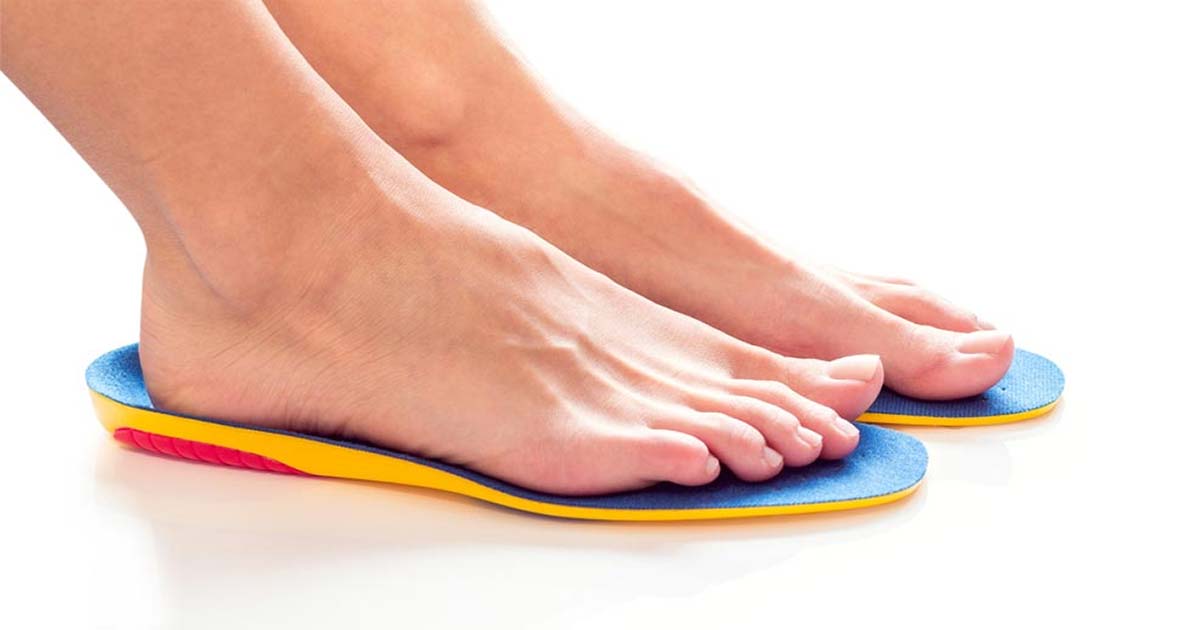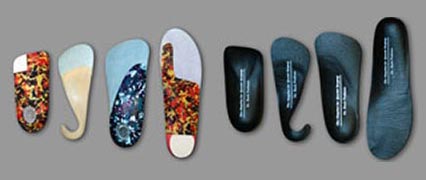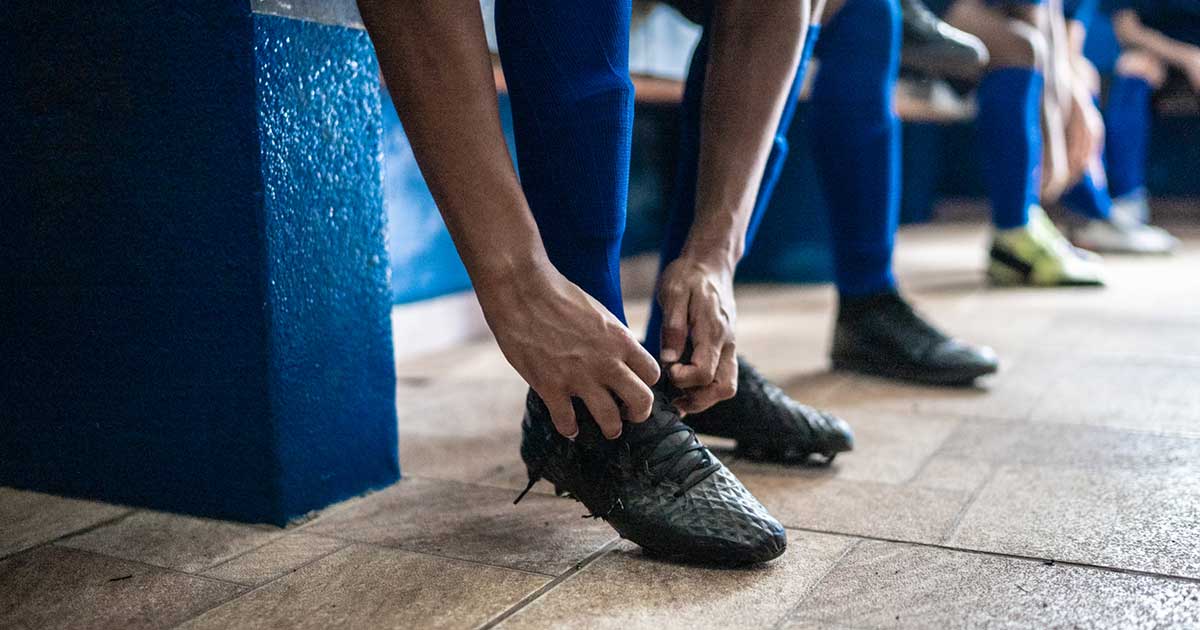Advice on Custom Orthotics from Nonsurgical Foot Specialists
Advice to improve your movement, fitness, and overall health from the world's #1 in orthopedics.
Almost everyone has suffered from foot pain at some point. A poll conducted by the American Podiatric Medical Association found that more than half of all Americans had missed a day of work because of foot problems. Considering that the feet are the major weight-bearing part of the body, it's little wonder we run into issues.

Foot problems are often treated with shoe inserts called orthotics. Custom-made foot and ankle orthotics are medical devices inserted into the shoe to correct an abnormal or irregular walking pattern. They work like shock absorbers, removing pressure and stress from painful areas in the foot and ankle. They can also prevent foot deformity or keep it from getting worse, better position the foot inside the shoe and improve the overall way that the foot and lower leg move.
“Foot pain is not normal and should not be ignored,” says Rock G. Positano, DPM, MSc, MPH, DSc, founder and director of the Non-surgical Foot and Ankle Service and the Joe DiMaggio Heel Pain Center at HSS. “The presence of foot problems can affect the proper functioning of other parts of the body, including the hips, knees and back.”
Since foot orthotics change the way a person walks, stands and absorbs shock from the ground, anyone wishing to use them should have a good reason. An orthotics consultation with a professional with the proper training and credentials, such as a podiatrist or non-surgical foot specialist, is a smart first step, says Dr. Positano. Both of these types of doctors specialize in the feet and lower legs.
“Custom orthotics are no different than a medication prescribed from the pharmacy,” he adds. “Prescribing the wrong medication — or in this case, the wrong orthotic — never results in a positive outcome. This is why a skilled and trained medical professional is best suited to evaluate the problem and prescribe the best solution.”
The Difference between Custom and Premade Foot Orthotics

Custom orthotics prescribed by a doctor are very different from the premade kinds found in shoe stores, ski and skate shops, pharmacies, sporting goods stores or online. While orthotics can be made in several different ways, most podiatrists make a plaster mold of the patient's foot and send it to a laboratory with a prescription. Technicians pour plaster into the mold, and when it hardens, it exactly reproduces the bottom of the person’s foot. Based on the doctor's prescription, the technicians then custom make a device to meet the patient's specific needs.
“Premade orthotics are mass-produced to fit an ‘average’ foot,” says Rock CJay Positano, DPM, co-director of the Non-surgical Foot and Ankle Service at HSS. “They may cost less, but they usually do not properly correct the specific problems found in a person’s foot and may end up doing more harm than good,” including by worsening certain conditions and creating orthopedic problems elsewhere in the body. Those at particular risk are people with heel pain, Achilles tendon pain, back or knee problems or those who have a high arch or flat feet.
There is variance between even custom orthotics, however. “All prescription orthotics are not created equal,” says Rock G. Positano. “Patients sometimes have a negative impression of these devices. But that’s primarily because they received an incorrect diagnosis and their prescription wasn’t designed properly. With the right prescription and instruction on how to use them, custom foot orthotics can really help.”
People who like high-impact or high-intensity sports often buy foot orthotics in stores or online to provide support or serve as shock absorbers. But “orthotics are very sport specific, and different sports require different orthotics,” says Rock CJay Positano. Orthotics for ski boots are not the same as for golf shoes or cycling shoes, for example. If you’re a fan of active sports, you should also see a podiatrist or foot specialist for a custom prescription.
Keep in mind that even custom foot orthotics need to be updated every two years, he adds. “Certain aspects of walking may change in the patient, and the materials used to make the orthotic wear away and do not provide the same support the device initially provided.”
Who Should Wear Custom Foot Orthotics
“Orthotics are very helpful after knee, hip and lower back surgery, especially when the patient has a problematic foot type, such as a flat foot or a foot with a high arch,” says Rock G. Positano. “These devices are quite helpful in helping to protect the lower extremity.”
In addition to providing relief for painful foot problems or injuries, orthotics may also help people who must walk or stand for a long time as part of their job. People who are overweight may also benefit from orthotics, which can help to counteract the extra stress on the feet. “Minor problems are often magnified due to the increased weight,” he adds.
For athletes, their sports result in a great deal of movement and pressure on the foot. Slight imbalances in the foot — which may not be harmful or even detectable under usual circumstances — may make a person more vulnerable to injury with the extra stress of sports activity. By eliminating the need for the muscles to compensate for imbalances you don’t know are there, orthotics can reduce fatigue and promote efficient muscle function to enhance performance.
Foot orthotics do not actually correct foot or ankle problems, such as fallen arches. But “orthotics can reposition the structures in the foot to help them move properly and reduce the chance of injury,” says Rock CJay Positano. Custom orthotics can provide relief for many different types of foot pain including:
- heel pain and plantar fasciitis
- arch pain
- pain caused by bunions, an injury or a sprain
- pain caused by running, walking and sports
- pain related to diabetes
- pain experienced by senior citizens whose feet change as they grow older
Types of Custom Orthotics
A podiatrist will prescribe orthotics based on medical problems or pain a patient may be experiencing. The podiatrist will also watch how a patient moves (known as gait analysis) and consider other issues like their level and type of activity, foot type, and the movement of their ankle, knee and hip. The doctor may also require X-rays.
Orthotics are particularly effective in relieving foot fatigue and discomfort experienced by older adults, who may have developed arthritis in their feet. Orthotics may also be prescribed for children who have a foot deformity.
Types of orthotics vary, but there are three broad categories: those that are meant to change how the foot functions, those that protect the foot to reduce pain or discomfort, and those that combine both aspects.
- Rigid custom orthotics are designed to control foot function and may be made from a firm material such as plastic or carbon fiber. These orthotics are mainly designed to control motion in two major foot joints, which lie directly below the ankle joint. This type of orthotic is often used to improve or eliminate pain in the legs, thighs and lower back due to abnormal function of the foot.
- Soft orthotic devices help to absorb shock, improve balance and take pressure off uncomfortable or sore spots. They are usually made of soft, compressible materials. This type of orthotic is effective for arthritis or deformities where there is a loss of protective fatty tissue on the side of the foot. They are also helpful for people with diabetes.
- Semirigid orthotics are often used for athletes. They allow for dynamic balance of the foot while running or participating in sports. By guiding the foot through proper functions, it allows the muscles and tendons to perform more efficiently. It is constructed of layers of soft materials, reinforced with more rigid materials.
Published 3/22/2021






